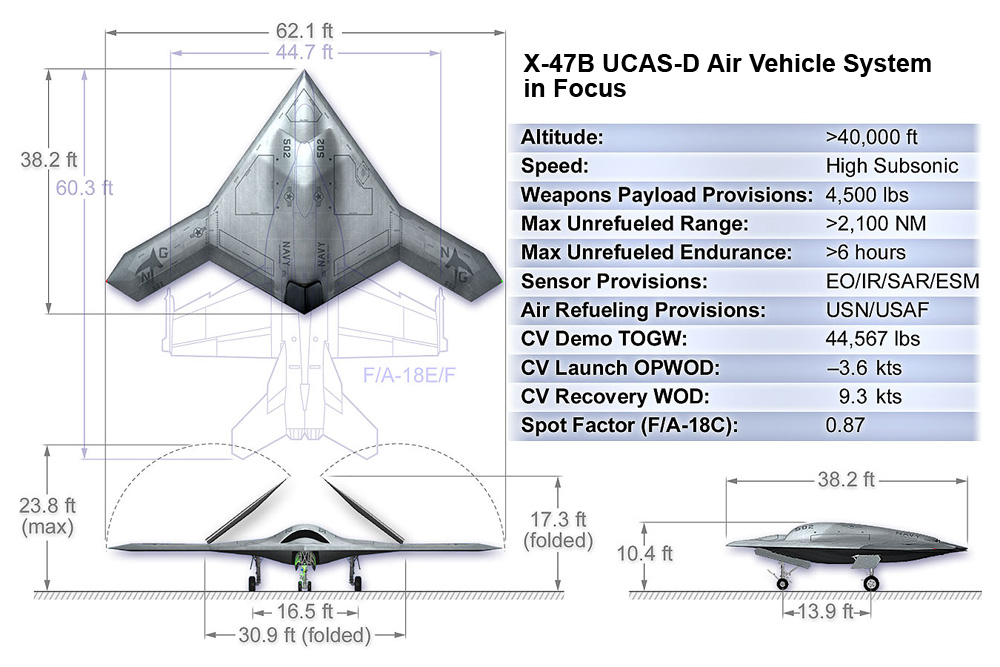How to install the app on iOS
Follow along with the video below to see how to install our site as a web app on your home screen.
Note: This feature may not be available in some browsers.
You are using an out of date browser. It may not display this or other websites correctly.
You should upgrade or use an alternative browser.
You should upgrade or use an alternative browser.
Military UAV Designs
- Thread starter Manticore
- Start date
SOHEIL
ELITE MEMBER

- Joined
- Dec 9, 2011
- Messages
- 15,796
- Reaction score
- -6
- Country
- Location
ALL
UAVs
UAV (Unmanned aerial vehicle) :
An unmanned aerial vehicle (UAV), commonly known as a drone, is an aircraft without a human pilot on board. Its flight is either controlled autonomously by computers in the vehicle, or under the remote control of a navigator, or pilot (in military UAVs called a Combat Systems Officer on UCAVs) on the ground or in another vehicle.
There are a wide variety of drone shapes, sizes, configurations, and characteristics. Historically, UAVs were simple remotely piloted aircraft, but autonomous control is increasingly being employed.
Their largest use is within military applications. UAVs are also used in a small but growing number of civil applications, such as firefighting or nonmilitary security work, such as surveillance of pipelines. UAVs are often preferred for missions that are too "dull, dirty, or dangerous" for manned aircraft.
SOHEIL
ELITE MEMBER

- Joined
- Dec 9, 2011
- Messages
- 15,796
- Reaction score
- -6
- Country
- Location

Northrop Grumman X-47B
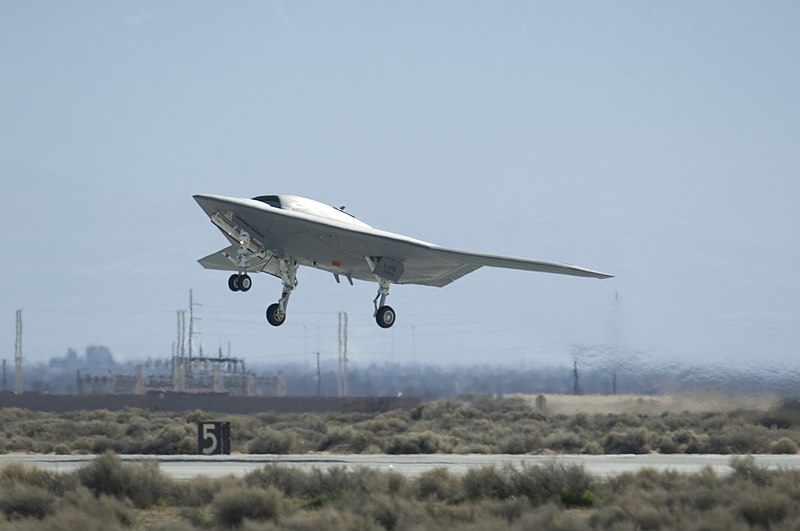
The Northrop Grumman X-47B is an American demonstration unmanned combat air vehicle (UCAV) which first flew in 2011. The X-47 project began as part of DARPA's J-UCAS program, and is now part of the United States Navy's UCAS-D (Unmanned Combat Air System Demonstration) program, which aims to create a carrier-based unmanned aircraft. Unlike the similar Boeing X-45, the development of the aircraft's predecessor, the X-47A Pegasus, was company-funded.
Specifications :
General characteristics
Crew: None aboard (semi-autonomous operation)
Length: 38.2 ft (11.63 m)
Wingspan: 62.1 ft extended/30.9 ft folded (18.92 m/9.41 m)
Height: 10.4 ft (3.10 m)
Empty weight: 14,000 lb (6,350 kg)
Max. takeoff weight: 44,567 lb (20,215 kg)
Powerplant: 1 × Pratt & Whitney F100-220U turbofan
Performance
Maximum speed: Subsonic
Cruise speed: 0.45 mach
Range: 2,100+ NM (3,889+ km)
Service ceiling: 40,000 ft (12,190 m)
Armament
2 weapon bays, providing for up to 4,500 lb (2,000 kg) of ordnance
Avionics
Provisions for EO/IR/SAR/ISAR/GMTI/MMTI/ESM
More : Northrop_Grumman_X-47B
SOHEIL
ELITE MEMBER

- Joined
- Dec 9, 2011
- Messages
- 15,796
- Reaction score
- -6
- Country
- Location

Boeing Phantom Ray (X-45C)

The Boeing Phantom Ray is a stealth unmanned combat air vehicle being developed by Boeing using company funds. The Phantom Ray is a demonstrator aircraft, about the size of a fighter that will conduct a program of test flights involving surveillance, ground attack and autonomous aerial refueling missions.
Specifications :
General characteristics
Crew: None (UCAV)
Length: 36 ft (11 m)
Wingspan: 50 ft (15 m)
Max takeoff weight: 36,500 lb (16,556 kg)
Powerplant: 1 × General Electric F404-GE-102D
Performance
Maximum speed: Mach 0.85
Cruise speed: 614 mph (534 kn; 988 km/h) ; Mach 0.8
Range: 1,500 mi (1,303 nmi; 2,414 km)
Service ceiling: 40,000 ft (12,192 m)
More : Boeing_Phantom_Ray
SOHEIL
ELITE MEMBER

- Joined
- Dec 9, 2011
- Messages
- 15,796
- Reaction score
- -6
- Country
- Location

General Atomics Avenger

The General Atomics Avenger (formerly Predator C) is a developmental unmanned combat air vehicle built by General Atomics Aeronautical Systems for the United States military. Its first flight occurred on 4 April 2009. Unlike the previous MQ-1 Predator and MQ-9 Reaper (Predator B) drones, the Avenger is powered by a turbofan engine, and its design includes stealth features such as internal weapons storage, and an S-shaped exhaust for reduced heat and radar signature. The Avenger will support the same weapons as the MQ-9, and carry the Lynx synthetic aperture radar and a version of the F-35 Lightning II's electro-optical targeting system (EOTS), called the Advanced Low-observable Embedded Reconnaissance Targeting (ALERT) system. The Avenger will use the same ground support infrastructure as the MQ-1 and MQ-9, including the ground control station and existing communications networks.
Specifications :
General characteristics
Crew: 2 (ground control)
Length: 41 ft (12 m)
Wingspan: 66 ft (20 m) sweep angle 17°
Powerplant: 1 × Pratt & Whitney Canada PW545B turbojet, 4,119 lbf (18.32 kN) thrust
Performance
Maximum speed: 460 mph; 741 km/h (400 kn)
Endurance: 20 hours with standard fuel
Service ceiling: 60,000 ft (18,288 m) operating altitude
Armament
Internal weapons bay, 3,000 pounds (1,400 kg) capacity. Capable of carrying AGM-114 Hellfire air-to-surface missiles, GBU-24 Paveway III bombs, and GBU-31 and GBU-38 JDAMs.
Avionics
Lynx Synthetic Aperture Radar
AESA Wide-area surveillance sensor
More : General_Atomics_Avenger
SOHEIL
ELITE MEMBER

- Joined
- Dec 9, 2011
- Messages
- 15,796
- Reaction score
- -6
- Country
- Location

Ghods Mohajer

Mohajer (Persian: مهاجر‎, "Migrant") or Mersad series of unmanned aerial vehicles is built by Iran and operated by Iran and Hezbollah. The Mohajer is primarily used to spy on military installations, enemy positions, etc. It may also be capable of guiding laser-guided munitions to their targets.
More : Ghods_Mohajer
SOHEIL
ELITE MEMBER

- Joined
- Dec 9, 2011
- Messages
- 15,796
- Reaction score
- -6
- Country
- Location

Mikoyan Skat

Designed by the Russian firm Mikoyan, the Skat (Russian: Скат – "Manta ray") is one of two concept strike UCAV currently being developed for the Russian Defense Ministry.
SKAT is a low-observable, subsonic craft meant to carry weapons in two ventral weapons bays large enough for missiles such as the Kh-31, powered by a single Klimov RD-5000B turbofan engine, a variant of the RD-93.
Possible roles include the suppression and attack of enemy air defenses. The first version of Skat to fly is planned to be piloted in order to meet Russian flight regulations. A number of aerodynamic configurations have been wind-tunnel tested, including with small twin fins. MiG has settled on a tail-less configuration.
The single-engine subsonic design has an 11.5 meter (37.7 ft) wingspan, and it is 10.25 meters (33.6 ft)long. The UCAV has a maximum take-off weight of 10 tons, with a maximum speed of 800 kilometers per hour (497 mph) at low altitude. It is intended to carry a combat load of up to two tons, with a combat radius of 2000km (1240 miles).
Specifications :
General characteristics
Crew: 0
Length: 10.25 m (33.6 ft in)
Wingspan: 11.5 m (37.7 ft in)
Powerplant: 1 × Klimov RD-5000B, ? kN (? lbf) thrust
Performance
Maximum speed: 800 km/h (497 mph)
Service ceiling: 12000 m (39370 ft)
Armament
Up to 2 tons of weapons in internal bays
More : MiG_Skat
SOHEIL
ELITE MEMBER

- Joined
- Dec 9, 2011
- Messages
- 15,796
- Reaction score
- -6
- Country
- Location

Sofreh Mahi

Sofreh Mâhi (Persian: سفره ماهی‎, "Eagle ray") is an Iranian stealth UCAV under development. Little is known about the drone but scaled down mock-ups shown during Iranian Army Day 2010 parade show that it has a flat diamond shape body with twin vertical stabilizers. First reference to the drone was given by Lieutenant Commander of the Iranian Air Force General Aziz Nasirzadeh who reported that the first tests of the drone were finished.
More : Sofreh_Mahi
SOHEIL
ELITE MEMBER

- Joined
- Dec 9, 2011
- Messages
- 15,796
- Reaction score
- -6
- Country
- Location

Lockheed Martin RQ-170 Sentinel
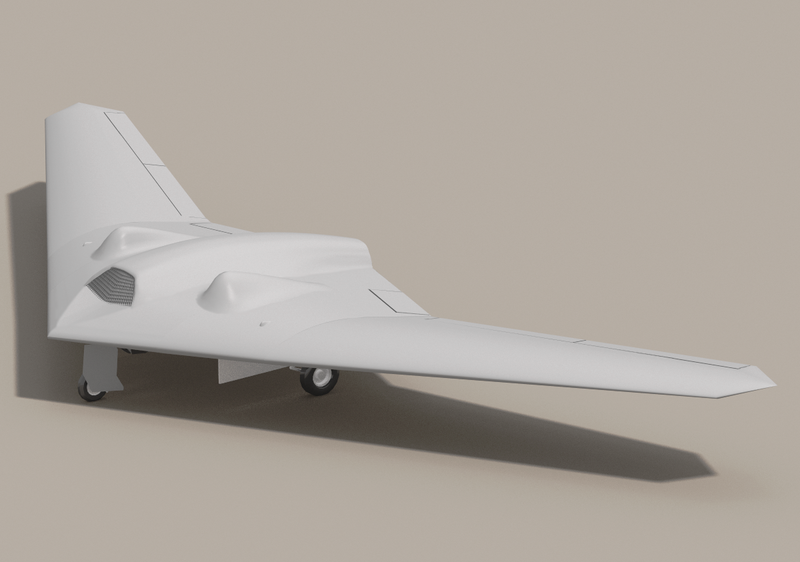
The RQ-170 Sentinel (colloquially known as The Beast of Kandahar) is an unmanned aerial vehicle (UAV) developed by Lockheed Martin and operated by the United States Air Force (USAF) for the Central Intelligence Agency. While the USAF has released few details on the UAV's design or capabilities, defense analysts believe that it is a stealth aircraft fitted with reconnaissance equipment.
RQ-170s have been reported as having operated in Afghanistan as part of Operation Enduring Freedom. It has been confirmed that the UAVs have operated over Pakistan and Iran; operations over Pakistan included sorties which collected intelligence before and during the operation which led to the death of Osama bin Laden in May 2011.

In December 2011, Iranian armed forces captured an RQ-170 flying over their country. The U.S. military has acknowledged losing an RQ-170 in the region. The UAV shown on Iranian television appears to be the missing American drone. On 13 December 2011, United States news outlets reported that a formal request for Iran to return the UAV had been issued from the United States to Iran. Iran denied the request and demanded an apology.
Specifications :
General characteristics
Crew: 0
Length: 4.5 m (14 ft 9 in)
Wingspan: 12 m (39 ft 4 in) estimated
Height: 2 m (6 ft) estimated
Powerplant: 1 × Garrett TFE731 or General Electric TF34 turbofan
Performance
Service ceiling: 15,240 m (50,000 ft) (estimated)
More : Lockheed_Martin_RQ-170_Sentinel
SOHEIL
ELITE MEMBER

- Joined
- Dec 9, 2011
- Messages
- 15,796
- Reaction score
- -6
- Country
- Location

BAE Systems Taranis
The BAE Systems Taranis is a British demonstrator programme for Unmanned Combat Air Vehicle (UCAV) technology. A semi-autonomous unmanned warplane, it is designed to fly intercontinental missions, and will carry a variety of weapons, enabling it to attack both aerial and ground targets. It will furthermore utilise stealth technology, giving it a low radar profile, and it will be controllable via satellite link from anywhere on Earth. The Strategic Unmanned Air Vehicles (Experiment) Integrated Project Team, or SUAV(E) IPT, is responsible for auditing and overseeing the project. The aircraft, which is intended to demonstrate the viability of unmanned multi-role systems, is named after the Celtic god of thunder, Taranis.
Specifications :
Height: 4 metres (13 ft)
Length: 11.35 metres (37.2 ft)
Wingspan: 9.1 metres (30 ft)
Weight: 8 tonnes (18,000 lb)
Range: Intercontinental
Engine thrust: 6,480 lb
More : BAE_Taranis
SOHEIL
ELITE MEMBER

- Joined
- Dec 9, 2011
- Messages
- 15,796
- Reaction score
- -6
- Country
- Location

Dassault nEUROn
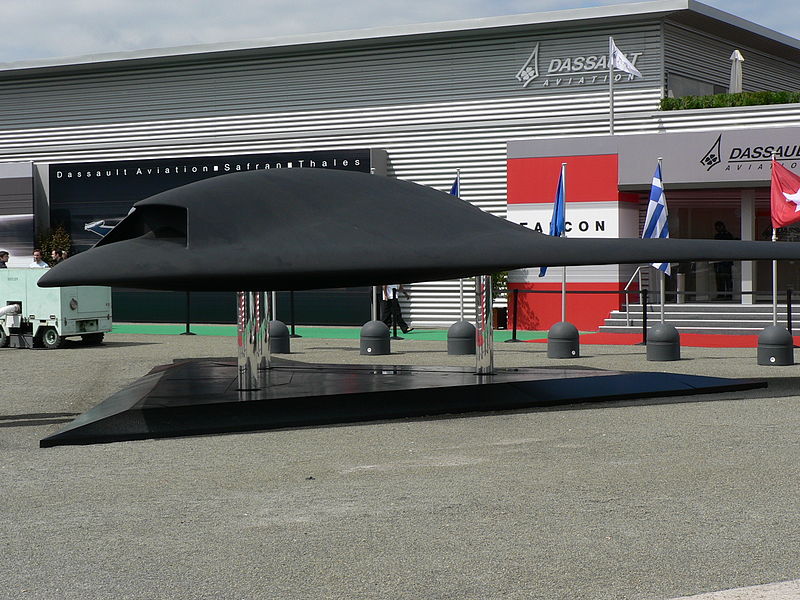
The Dassault nEUROn is an experimental Unmanned Combat Air Vehicle (UCAV) being developed with international cooperation, led by the French company Dassault Aviation.
Specifications :
General characteristics
Crew: 0
Length: 9.5 m (31 ft 2 in)
Wingspan: 12.5 m (41 ft 0 in)
Empty weight: 4900 kg ( lb)
Gross weight: 7,000 kg (13,000 lb)
Powerplant: 1 × Rolls-Royce/Turboméca Adour / Snecma M88, 40 kN ( lbf) thrust each
Performance
Maximum speed: 980 km/h ( 608 mph) km/h ( mph)
Service ceiling: 14000 m ( 45,900 ft) m ( ft)
Armament
2 x 500lbs guided bombs
More : Dassault_nEUROn
SOHEIL
ELITE MEMBER

- Joined
- Dec 9, 2011
- Messages
- 15,796
- Reaction score
- -6
- Country
- Location

EADS Barracuda

The EADS Barracuda is an European unmanned aerial vehicle (UAV) currently under development by EADS, intended for the role of reconnaissance and also combat (UCAV). The aircraft is a joint venture between Germany and Spain.
Development of the project was stopped after the first prototype crashed at sea while approaching for landing during a test flight. The program was resumed in 2008, with a second prototype being completed in November 2008. The rebuilt Barracuda underwent a series of successful flight tests in Goose Bay, Canada during July 2009.
The Barracuda is primarily in competition with the Dassault nEUROn for strategic and defensive contracts. Both are stealthy and have a maximum air speed of around Mach 0.85 . While Germany and Spain are behind the Barracuda, France, Italy and Sweden, among others, are funding the nEUROn. Not much is known about the Barracuda as it is still in development. However the Barracuda is thought to have an operating ceiling of around 20,000 ft and carries a maximum payload of 300 kg.
Specifications :
General characteristics
Crew: 0
Length: 27 ft 0 in (8.25 m)
Wingspan: 23.7 ft in (7.22 m)
Height: ft in (m)
Wing area: ft (m)
Empty weight: lb (2300 kg)
Loaded weight: lb (kg)
Useful load: lb (kg)
Max. takeoff weight: lb (3250 kg)
Performance
Never exceed speed: mph (km/h)
Maximum speed: 0.85 mach (km/h)
Cruise speed: mph (km/h)
Stall speed: mph (km/h)
Range: mi (km)
Service ceiling: ±20,000 ft (m)
Rate of climb: ft/min (m/s)
Wing loading: lb/ft² (kg/m²)
More : EADS_Barracuda
SOHEIL
ELITE MEMBER

- Joined
- Dec 9, 2011
- Messages
- 15,796
- Reaction score
- -6
- Country
- Location

Lockheed Martin Polecat
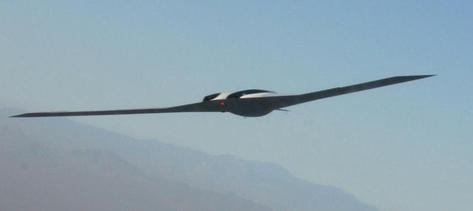
The Lockheed Martin Polecat (company designation P-175) was an unmanned aerial vehicle by Lockheed Martin. It was developed by the company's Advanced Development Programs division in Palmdale, California. "Polecat" is a colloquialism for a skunk, in an apparent reference to the popular "Skunk Works" nickname for the Lockheed Martin's Advanced Development Programs division.
Specifications :
General characteristics
Capacity: 1,000 lb (450 kg) of weapons or sensors
Length: (100 ft)
Wingspan: 90 ft (27.44 m)
Height: ()
Loaded weight: 9,000 lb (4,090 kg)
Powerplant: 2 × Williams FJ44-3E turbofan, 3,000 lbf (13.38 kN) each
Performance
Service ceiling: 65,000 ft (19,817 m)
Endurance: 4 hours
More : Lockheed_Martin_Polecat
SOHEIL
ELITE MEMBER

- Joined
- Dec 9, 2011
- Messages
- 15,796
- Reaction score
- -6
- Country
- Location

Ghods Ababil

The Ababil (Persian: ابابیل‎, "swallow") is an Iranian-made UAV. Iran has developed a number of variants, including the tactical Ababil-5 for medium-range reconnaissance and surveillance, the Ababil-T for short/medium-range attack, and also the Ababil-B and -S.
More : Ababil
Similar threads
- Replies
- 0
- Views
- 3K
- Replies
- 0
- Views
- 502
- Article
- Replies
- 0
- Views
- 747
- Article
- Replies
- 0
- Views
- 533
Latest posts
-
-
-
Russia Has Delivered MI-35M Assault Helicopters To Pakistan
- Latest: Defense Reader
Pakistan Affairs Latest Posts
-
Russia Has Delivered MI-35M Assault Helicopters To Pakistan
- Latest: Defense Reader
-
India launches missile attacks on Multiple locations in Pakistan,
- Latest: RaktimChandra




